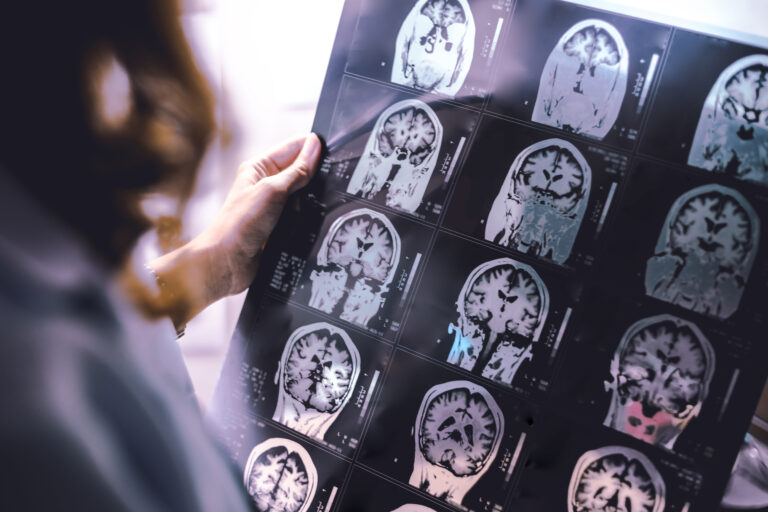**Advanced Molecular Imaging Techniques in Alzheimer’s: Linking Protein Aggregation to Cognitive Decline**
Alzheimer’s disease is a complex condition that affects millions of people worldwide. It is characterized by cognitive decline and memory loss, and it is often linked to the accumulation of abnormal proteins in the brain. Advanced molecular imaging techniques have become crucial in understanding and diagnosing Alzheimer’s by visualizing these protein aggregates.
### Amyloid PET Scans: A New Era in Diagnosis
One of the most significant advancements in Alzheimer’s diagnosis is the use of amyloid PET scans. These scans can detect the presence of amyloid beta (Aβ) plaques in the brain, which are a hallmark of Alzheimer’s disease. Traditional FDG-PET scans, which measure glucose metabolism, have been used for over 20 years to diagnose Alzheimer’s. However, new rapid amyloid PET scans can detect amyloid plaques in just a few minutes, potentially replacing the need for multiple scans and reducing radiation exposure for patients[1].
### Tau PET Imaging: A New Frontier
In addition to amyloid PET, tau PET imaging has emerged as a powerful tool. Tau protein is another key component of Alzheimer’s pathology, forming neurofibrillary tangles within neurons. The Society of Nuclear Medicine and Molecular Imaging (SNMMI) and the Alzheimer’s Association have released updated guidelines for the use of tau PET imaging, which can help clinicians better understand the progression of dementia[4].
### Non-Coding RNAs: The Hidden Players
While imaging techniques provide visual evidence of protein aggregation, non-coding RNAs (ncRNAs) play a crucial role in the molecular mechanisms underlying Alzheimer’s disease. These small RNA molecules regulate various processes, including the production of amyloid beta and the hyperphosphorylation of tau protein. Research has shown that dysregulation of ncRNAs contributes to the progression of Alzheimer’s, making them potential therapeutic targets[2].
### Natural Products: A New Hope
Current treatments for Alzheimer’s often come with significant side effects. However, natural products have shown promise in modulating tau hyperphosphorylation and aggregation. Compounds from plants and other natural sources have been studied for their ability to inhibit kinases, enhance phosphatase activity, and block fibril formation. These natural products offer a potential alternative to traditional medications, providing hope for more effective and safer treatments[5].
### Conclusion
Advanced molecular imaging techniques, including amyloid and tau PET scans, have revolutionized the diagnosis and understanding of Alzheimer’s disease. By visualizing protein aggregates, these techniques help link cognitive decline to specific molecular mechanisms. The role of non-coding RNAs in Alzheimer’s pathology and the potential of natural products in treating the disease further underscore the complexity and multifaceted nature of this condition. As research continues to evolve, these tools will remain essential in the fight against Alzheimer’s.
—
By understanding and leveraging these advanced imaging techniques and molecular insights, we can better diagnose and treat Alzheimer’s disease, ultimately improving the lives of those affected by this condition.





